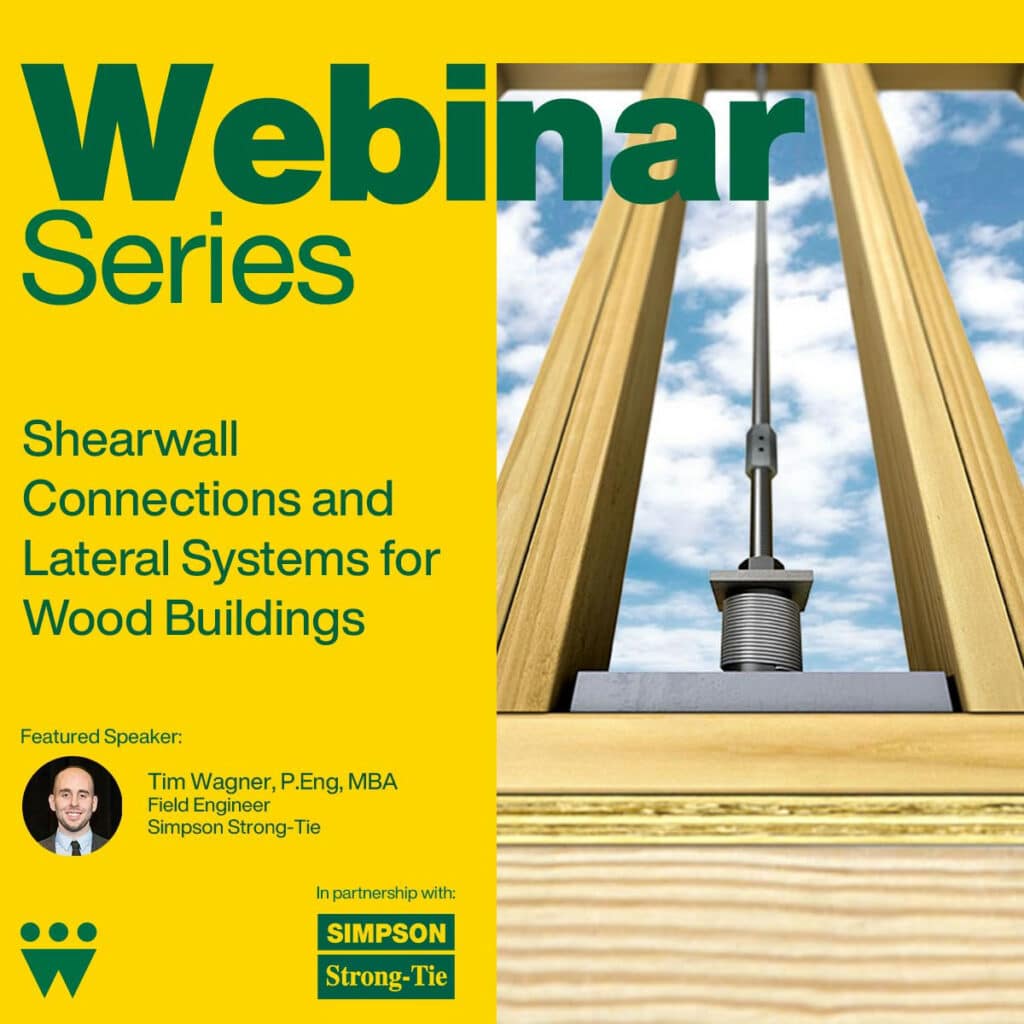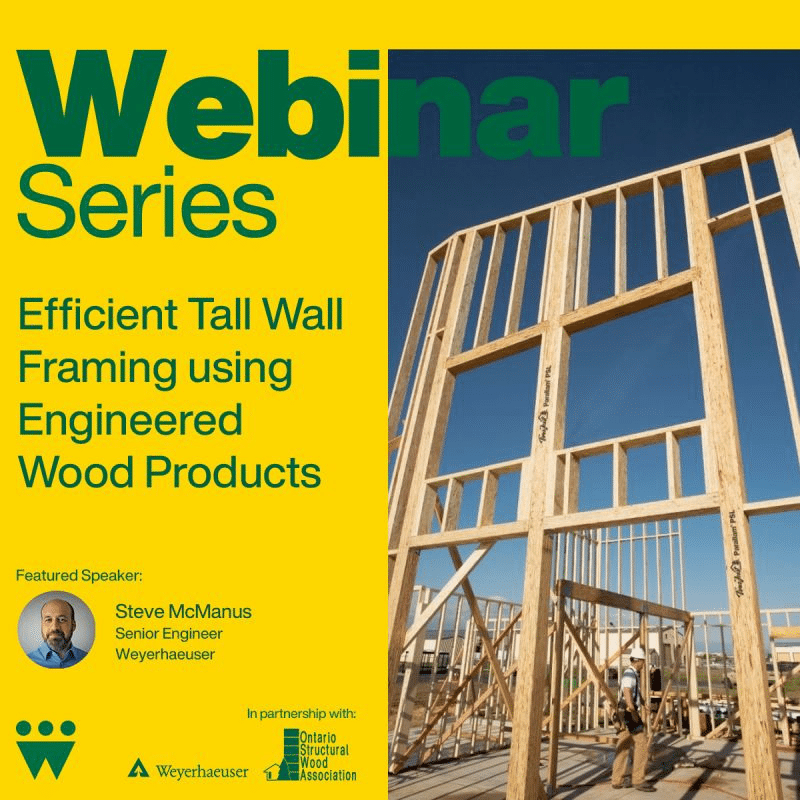Shearwall Connections and Lateral Systems for Wood Buildings

Course Overview This comprehensive course delves into the latest advancements in wood shearwall systems and connections, featuring critical updates from the 2020 National Building Code of Canada (NBCC). This course will cover essential topics, including advancements in lateral systems and rod holdowns, and provide a step-by-step approach to accurately calculating deflection for rod holdowns. Dive into key details on relevant connections and fasteners that enhance performance and resilience. The session will culminate with a overview of the outcomes of a groundbreaking 10-storey mass timber seismic test conducted in San Diego as part of the NHERI Tall Wood Project, showcasing how these innovations perform under real-world conditions. This webinar is designed for engineers, architects, and construction professionals looking to stay current with advancements in seismic design for wood structures. Learning Objectives Gain insights into the latest advancements in seismic and lateral force-resisting systems for timber construction. Learn effective methods for calculating deflection in rod hold-down systems, ensuring compliance with structural performance standards. Explore best practices and expert recommendations for specifying connections in shearwalls to optimize strength and resilience. Understand key findings from the NHERI TallWood test, highlighting lessons from the tallest mass timber building ever tested on a shake table. Course Video Speaker Bio Tim Wagner, P.Eng., MBA Field Engineer Simpson Strong-Tie Tim joined Simpson Strong-Tie in 2014 as an EIT, and earned his Professional Engineering designation in 2018. His primary role is building relationships with specifiers in western Canada, with major focuses on connections, lateral systems fasteners and anchors.
Gestimat Toward Low Carbon Construction

Course Overview Gestimat facilitates the assessment of the carbon footprint of buildings. Developed in Quebec for the Wood Charter and financed by the Fonds vert, Gestimat is also available in English since April 2020. This new web-based tool estimates the greenhouse gas (GHG) emissions related to structural materials used in different building scenarios. Scenario modelling can be done during preliminary design using estimation from typical buildings or, further in the design, by entering quantities of materials specific to a given project. Learning Objectives Learn about the possibilities of the GESTIMAT tool. Understand principles behind the calculations in GESTIMAT. Evaluate the applicability of GESTIMAT for your projects. Learn how to create a GESTIMAT analysis for a preliminary project. Learn how to modify a GESTIMAT analysis to adapt the quantities of materials to a specific project. Course Video Speaker Bio Caroline Frenette, Eng., Ph. D. Technical Advisor Cecobois Over the past 30 years, Caroline Frenette has developed expertise in timber structures and sustainable construction. After her bachelor’s degree in civil engineering at the Université de Sherbrooke, her interest in wood construction led her to undertake a master’s degree on the seismic behaviour of timber structures at the University of British Columbia. She worked for several years in France and Austria designing timber and hybrid structures in a specialized engineering firm. She was also involved in the construction of an experimental bioclimatic house, a personal project using biobased materials and innovative building technologies. She pursued her interest for sustainable construction during her doctoral thesis on multicriteria analysis of wood-framed walls, studying several aspects of building performance, including environmental impact based on Life Cycle Assessment. Technical advisor with Cecobois since 2009, Caroline is also adjunct professor in the Department of Wood and Forest Sciences and teaching at the Centre de formation en développement durable (CFDD) at Université Laval, and a member of the Centre de recherche sur les matériaux renouvelables (CRMR).
Efficient Tall Wall Framing using Engineered Wood Products

Course Overview This webinar will explore the basic design principles and best practices for efficient tall wall design using engineered wood products. Discussion will include material selection, design for climate conditions, and a complete design example using freely available software tools. Learning Objectives Understand the design principles and inputs required to size tall wall framing members. Recognize some of the pitfalls of inadequate tall wall design. Learn about easy-to-use tools and software available to simplify this process. Course Video Speaker Bio Steve McManus Senior Engineer Weyerhaeuser Steve McManus, a professional engineer based in Langley, BC, supports Weyerhaeuser’s Trus Joist® Engineered Lumber Products in residential and light commercial construction. He provides technical support, training, and field issue resolution for suppliers, architects, engineers, and building officials across Canada. Steve’s 27 years of experience in the forest industry includes structural design and engineering, forest management, and wood products manufacturing.

